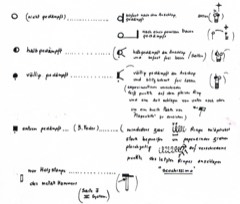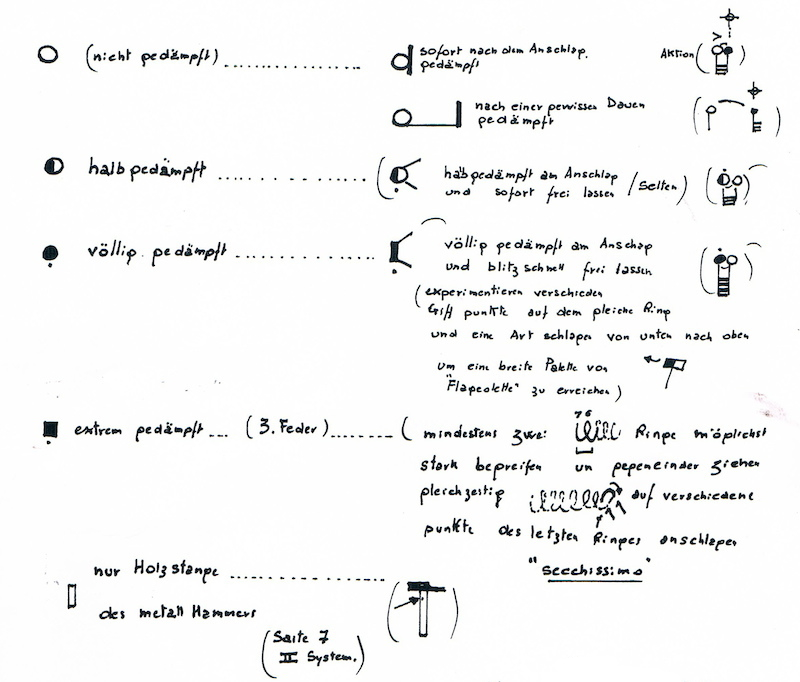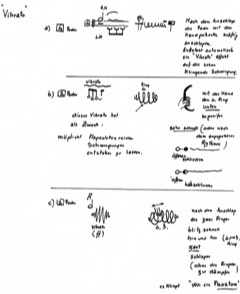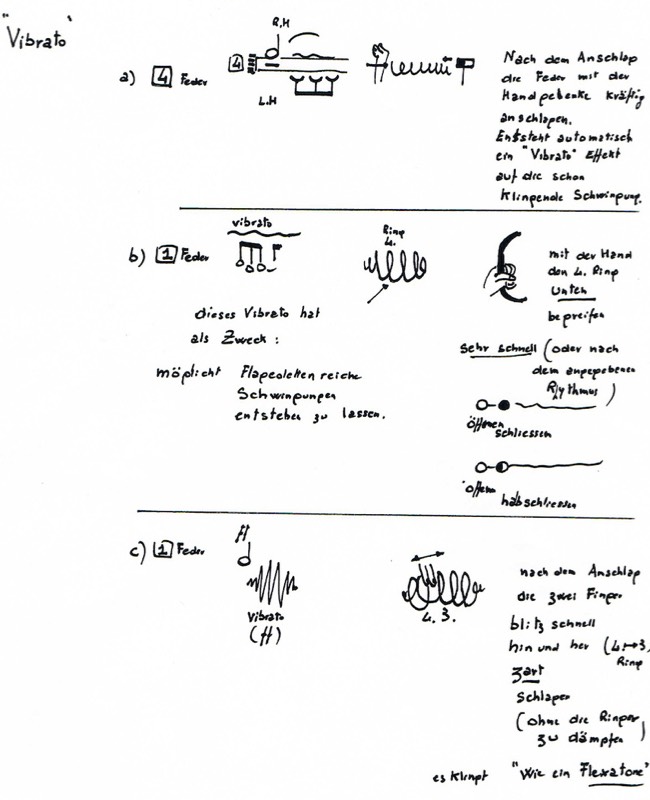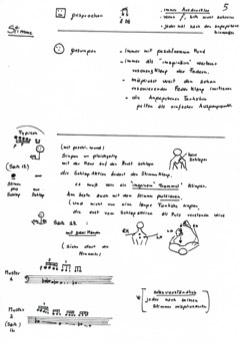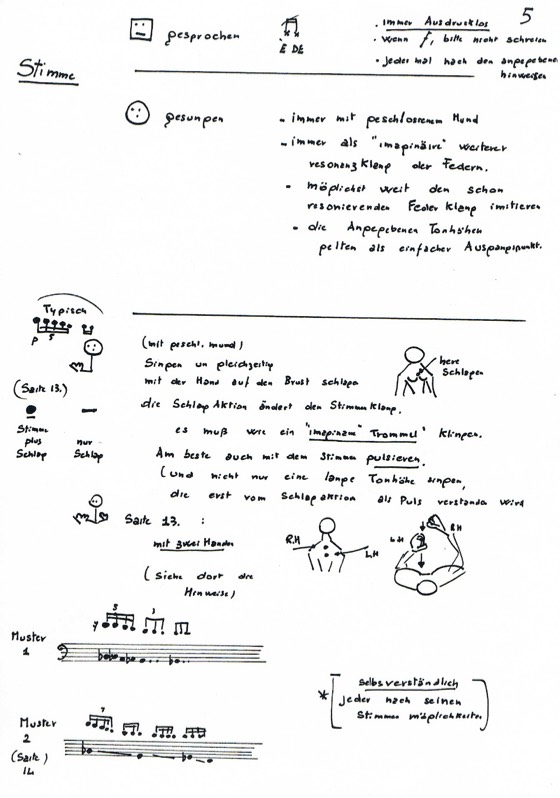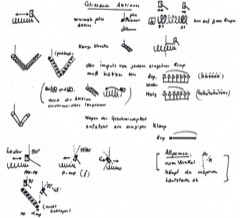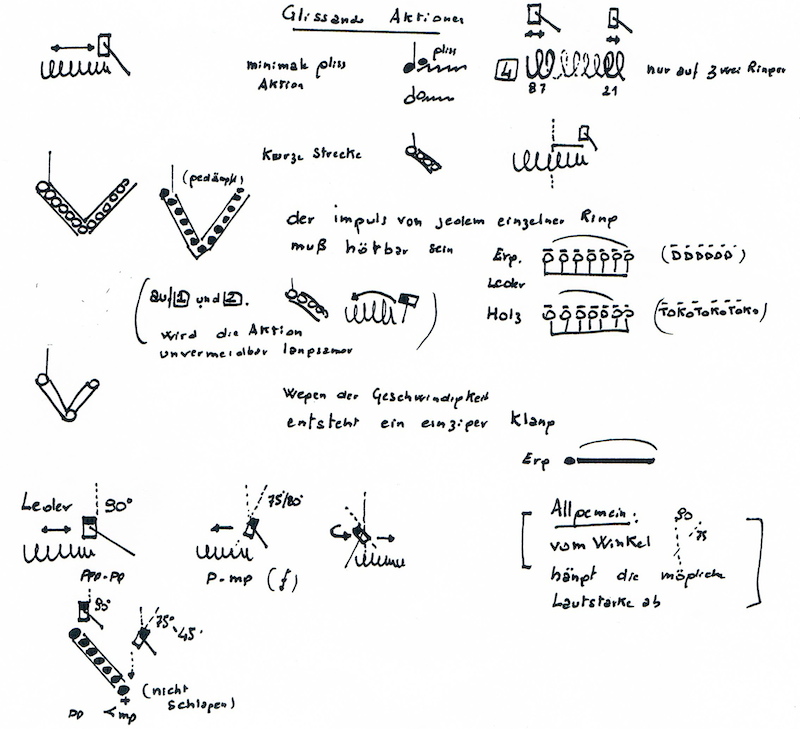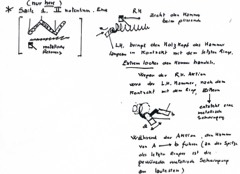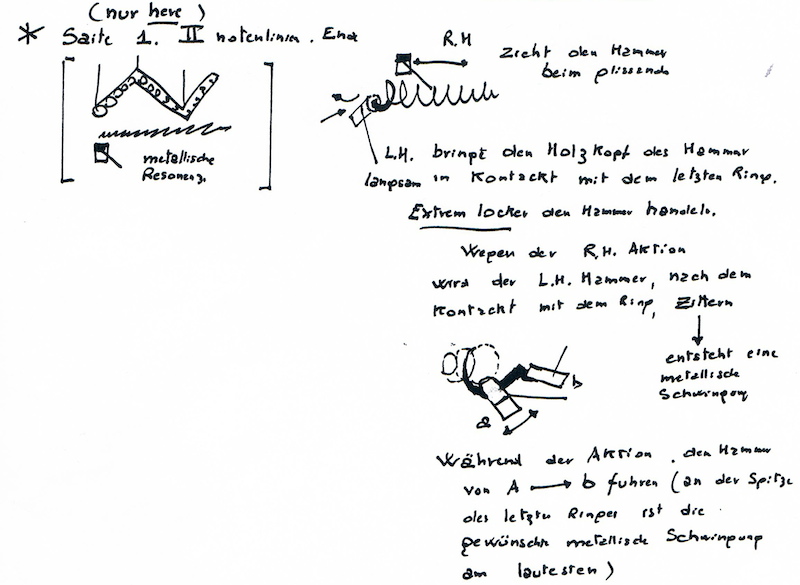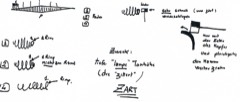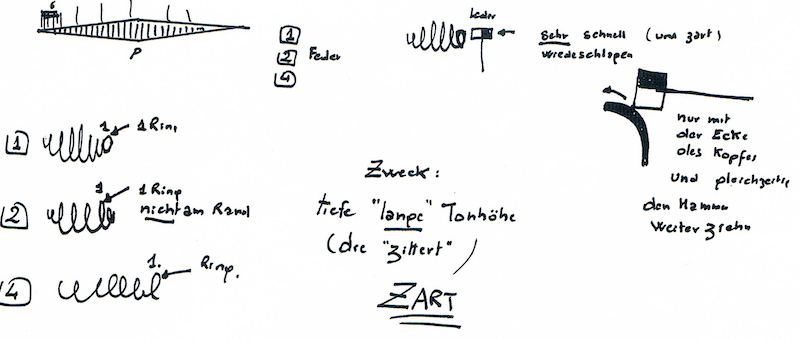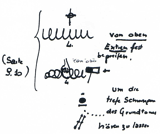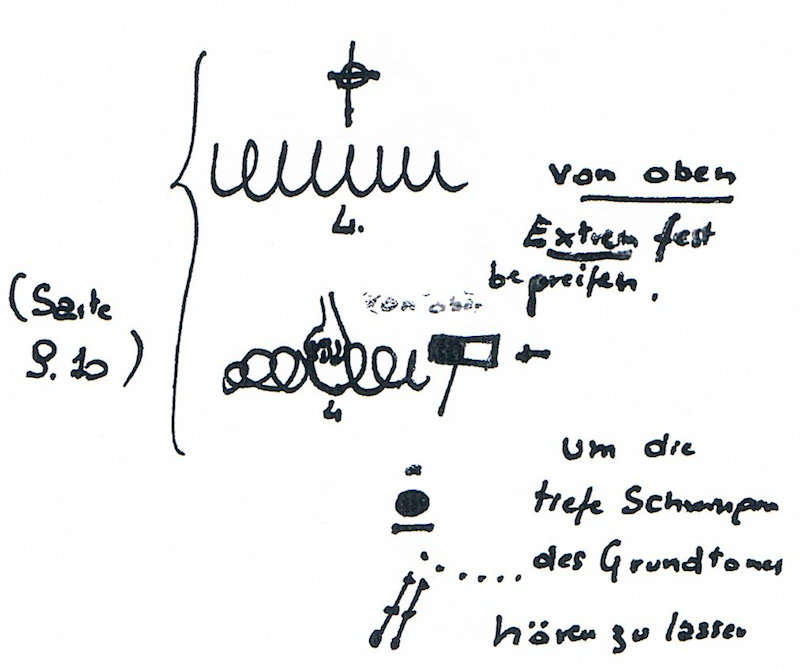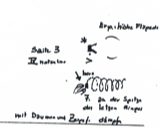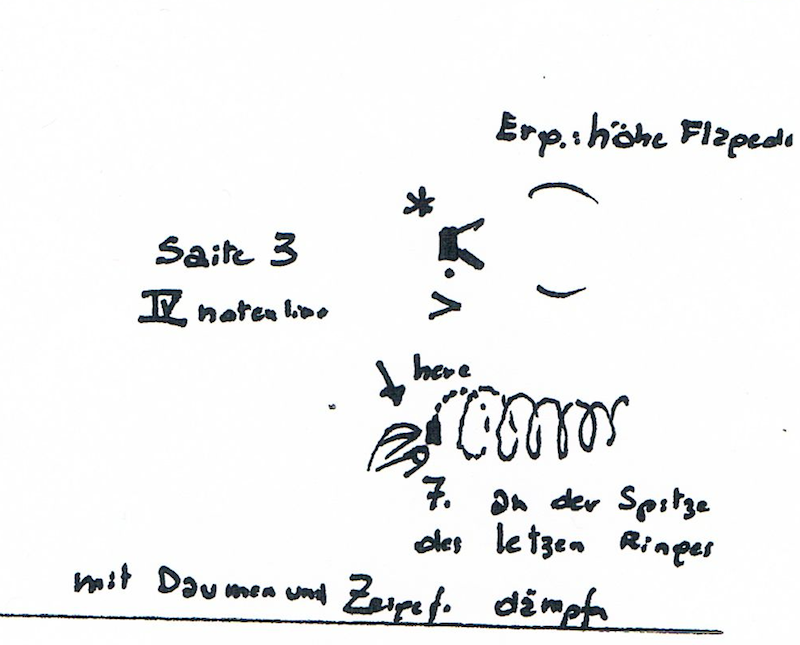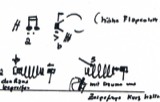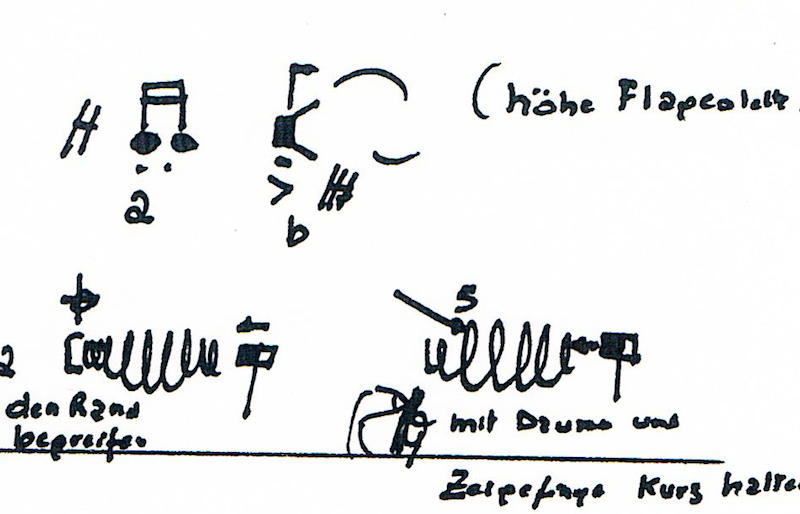Improving the practice and performance of contemporary music
Assimilation and adaptation of the different techniques and combinations
Dampening techniques and strokes
- “Nicht gedämpft”: open full strokes on the coil, either at the edge or on the upper-side of the rings. For this technique, Billone also writes damping actions, either immediately after the stroke, what results in a short full sound, or after a measured amount of time, what results in a time-controlled full note.
- “Halb gedämpft”: open full strokes while dampening the coil in a way that the full stroke sound quality is still preserved, yet the resonance is shorter and controllable. You can compare this type of playing with playing half pedal on a vibraphone. I use the surface of the hand laid against the coil rather than putting pressure on it to obtain this effect, especially on coil 4.
- ”Völlig gedämpft”: open full strokes while dampening the coil with a lot of pressure, to obtain short sounds. There is no resonance here. Related to this technique are the “flageolet” sounds, which are obtained by dampening the coil fully while stroking it and then immediately releasing it to obtain high harmonic sounds. Some practice is required to optimize this technique fully.
- ”Extrem gedämpft”: this technique is only used on coil 3. The two last rings of the more flexible third coil are pulled together while dampening, resulting in a dry glissando, where the pressure that is applied on the two last rings determines the pitch of the sound.
Finger and wrist strokes
- Use of the fingers: it is unclear in the score which part of the finger is to be used. I mostly used the top of the index or middle finger but when extra clarity is needed due to too much resonance in the coils, I used the fingernail of the index finger to get a brighter type of sound.
- Use of the wrist: This technique is only used on the coil 4. It is used to produce a deep bass sound by hitting the coil 4 quite hard on the edge. The resonance box helps a lot for this technique.
Vibrato techniques
- The first is obtained by using the wrist on coil 4 as described above after first hitting the coil with a full stroke.
- The second is a flageolet-vibrato on the first coil, obtained by alternatively hitting the coil and dampening it fully or half. For the latter I didn’t really use the open-half close movement in the dampening action, but rather shook my hand very fast while holding the middle ring of the first coil in a loose way.
- The third vibrato effect is obtained by shaking a flat-opened hand between ring 4 and 5 of coil 1. This effect is very shimmering and sounds almost like a flexatone.
Voice techniques
- The pitches are not imperatively absolute but the intervals should be respected as close as possible. Therefore the use of a glass pitched in A will help you to maintain your chosen pitches. Clearly decide what pitches you are going to use when you are practising the piece.
- The choice of the pitches depends on the coils you are using, because the voice is used as an extension of the resonance of the coils. You basically just “sing along”. Only when the coils are dampened and the voice is written “solo” should it be obvious that you are singing.
- When the voice is used together with striking the chest, the striking is the most important; the voice is basically just an amplification of the strokes.
- When the voice is used to speak text, it should be performed as distant and objective as possible, almost without expression.
Glissando techniques
This is quite obvious how to execute. However it is important to take care of the angle of the hammer to obtain the written dynamics and gestures. The change in angle contributes extremely well to the articulation of certain phrases. The glissandi are naturally often combined with open/half-open/closed dampening techniques. These differences should be as clear as possible, also in the articulation.
An extended glissando-technique is used only once at the beginning of the piece, by connecting the woodenhead of one hammer to the extreme edge of coil 4, while performing a glissando on it. This results in a kind of “saturated” coil, like it would be prepared with aluminum foil. The crescendo that is asked for in this particular passage is obtained by moving the left-hand hammer from point a to b in the crescendo and back to point a to achieve the diminuendo. The saturated effect is the most obvious and “loudest” at point b.
Additional techniques
Dampening coil 4 on ring 4 while playing: Instead of dampening coil 4 at the last rings, here the middle ring is held and dampened in an extreme way, which results in a low resonance when hit in a full stroke. The resonance is comparable to the one that is obtained in point 6: “Use of the wrist”.
Extreme flageolet on coil 3: This flageolet is obtained by holding the extreme point of coil 3 with two fingers and then releasing immediately after hitting. The technique is comparable to a dampened stroke number 3: “Völlig gedämpft”, only this time only two fingers are used.
This technique also appears in another way on coil 1 as shown in the picture below.
